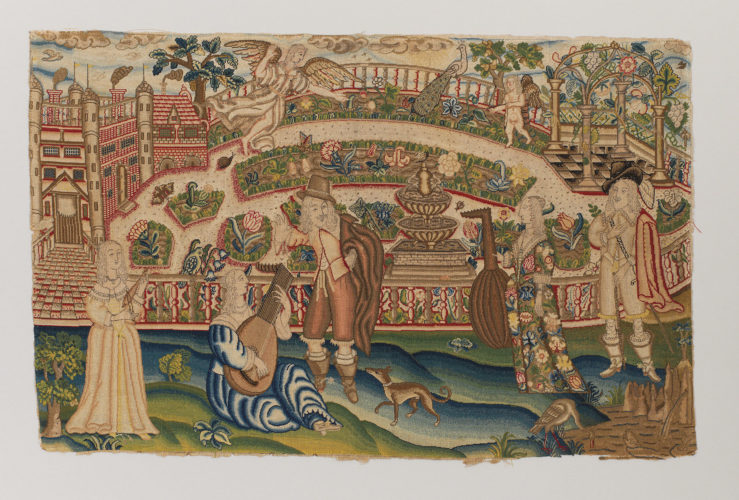Gardens were associated with knowledge in classical philosophy as well as the biblical tradition: Plato’s famous Academy was originally a garden in the suburbs of Athens, beautified with statues, temples, and sepulchres, planted with olive and plane trees, and watered by the river Cephissus. Here, Socrates, Plato and other scholars gathered to discuss philosophical topics ranging across politics, love, art, and the nature of reality itself. In the Renaissance, the tradition was revived by wealthy gentlemen who gathered in gardens to eat, drink and converse. In the fifteenth century, for example, Lorenzo de’ Medici opened up the gardens at the Villa Medici in Fiesole, near Florence, to artists, writers and thinkers including the Neoplatonist philosopher Marsilio Ficino and the sculptor and painter Michelangelo Buonarroti.
In contrast such all-male scenes, the female maker of this embroidered work stages the garden as a scene of intellectual pleasure courtesy of the female musicians. The flowers decorating the dress of the woman on the right associate her with the rational and disciplined beauty of the formal garden behind her.











